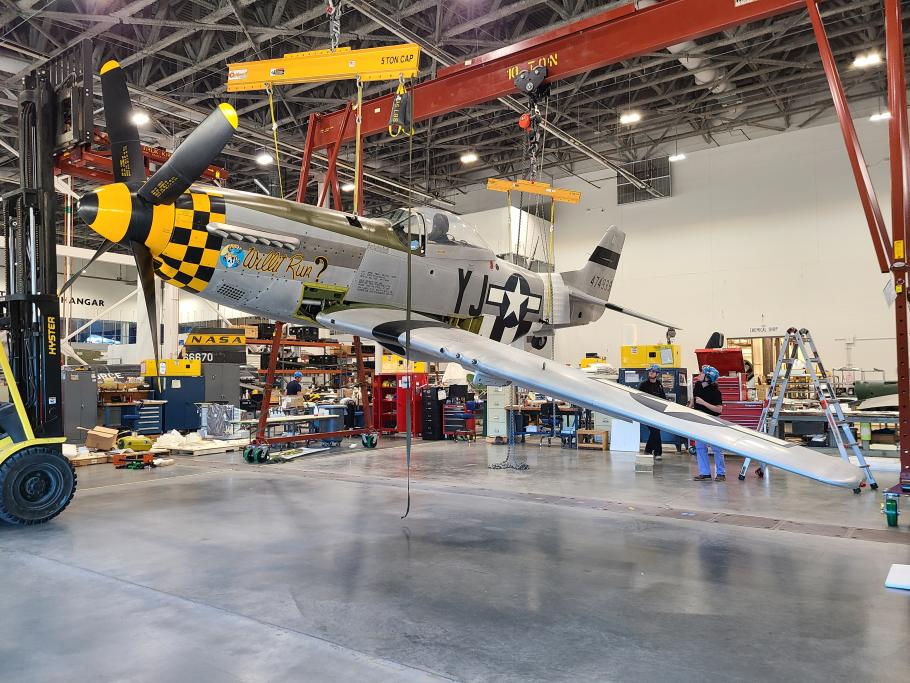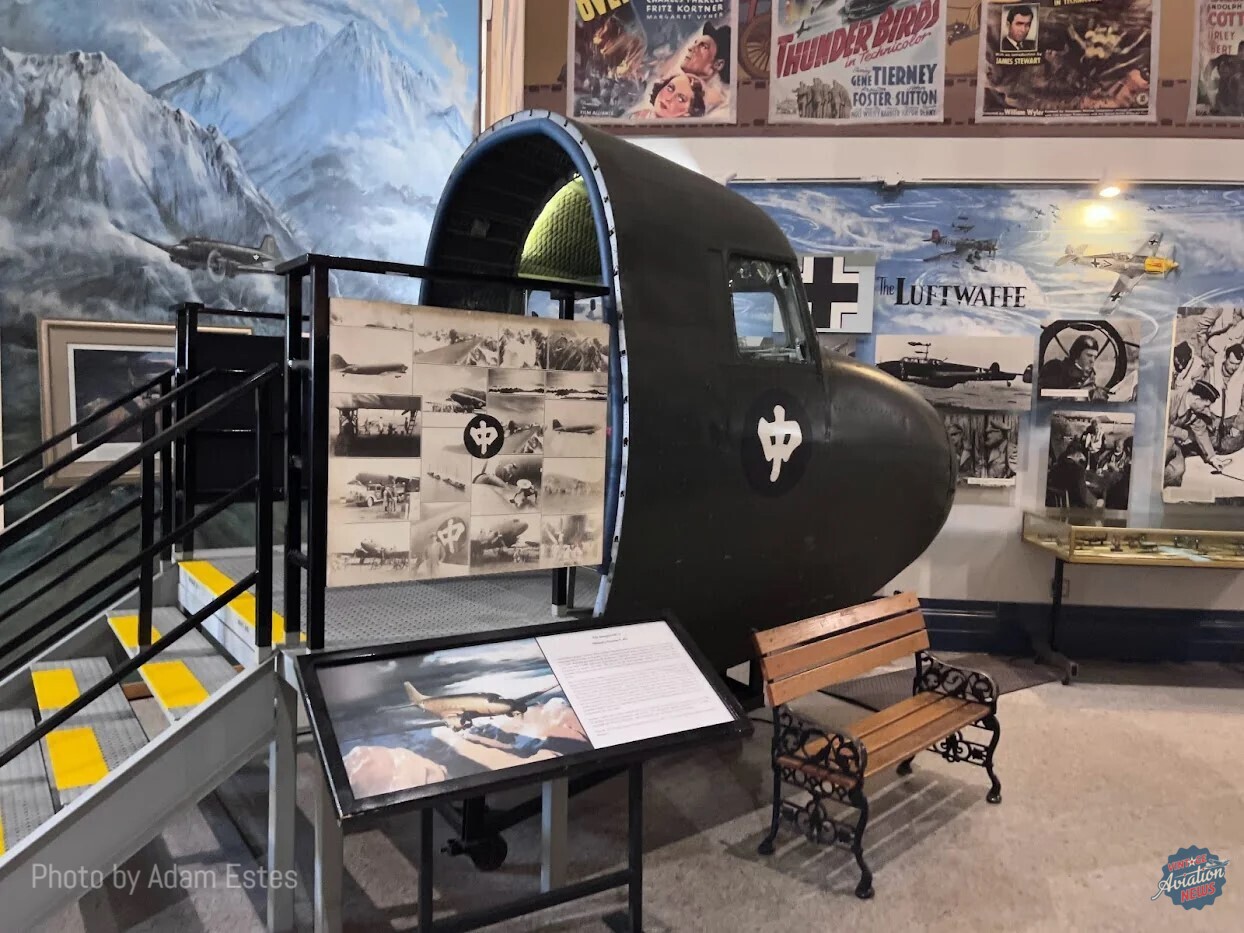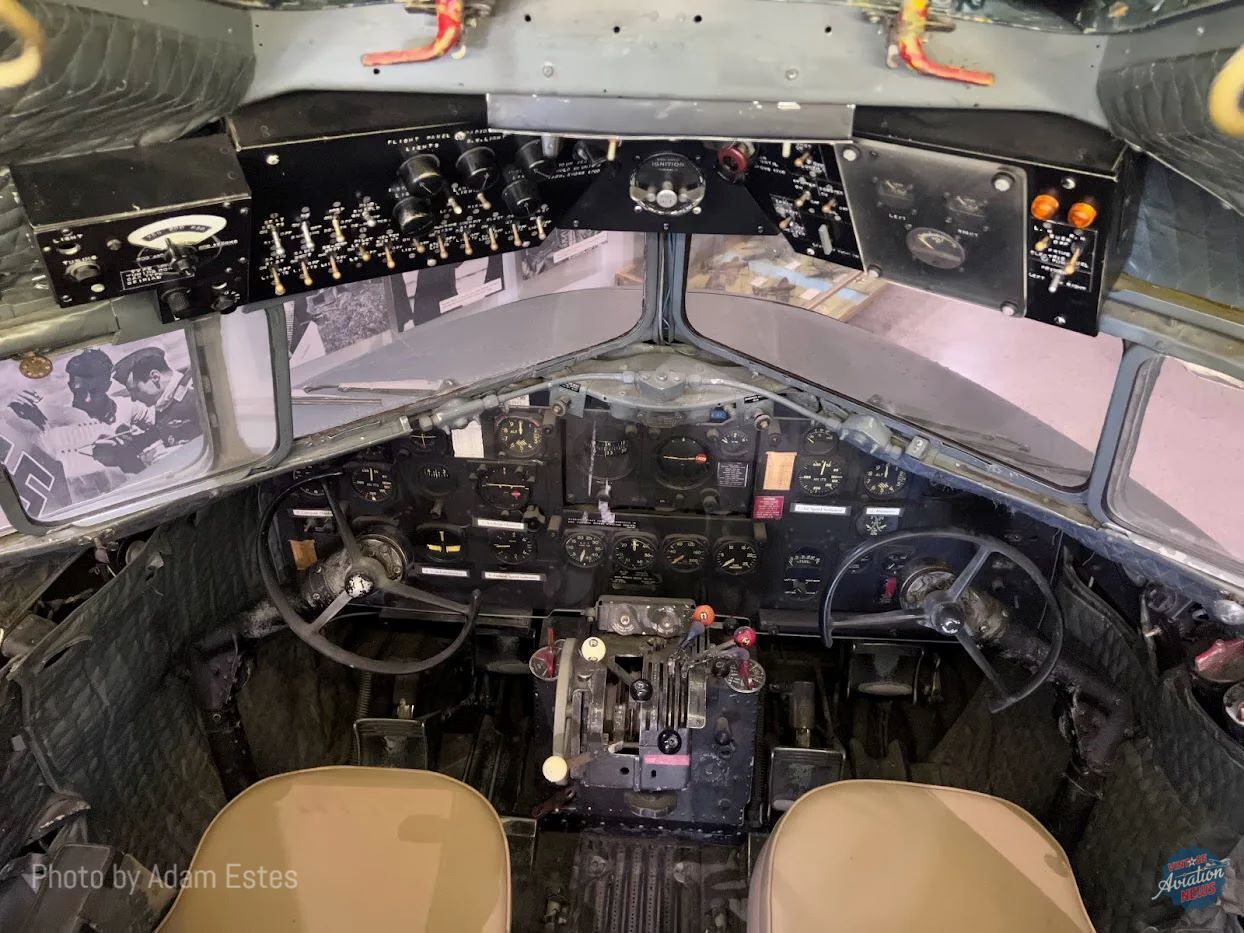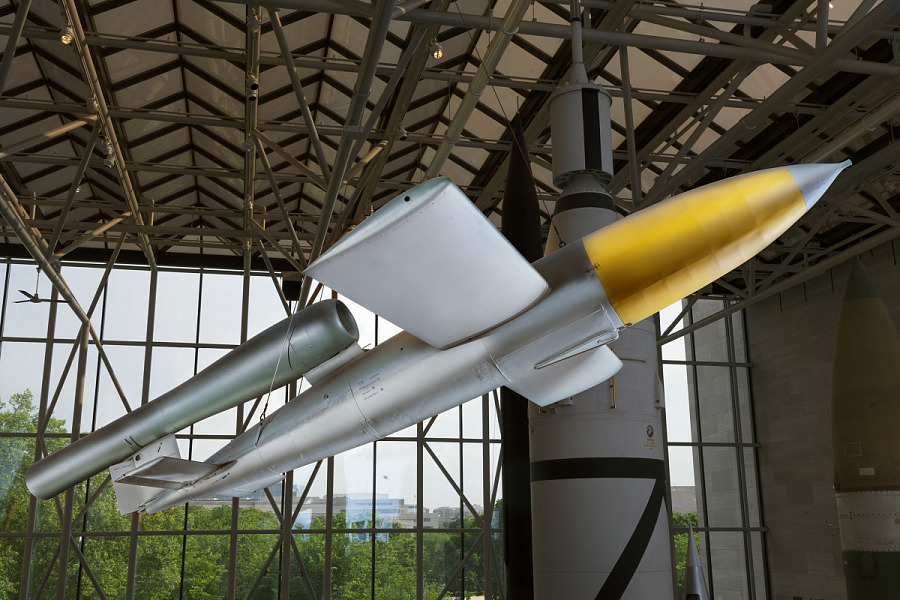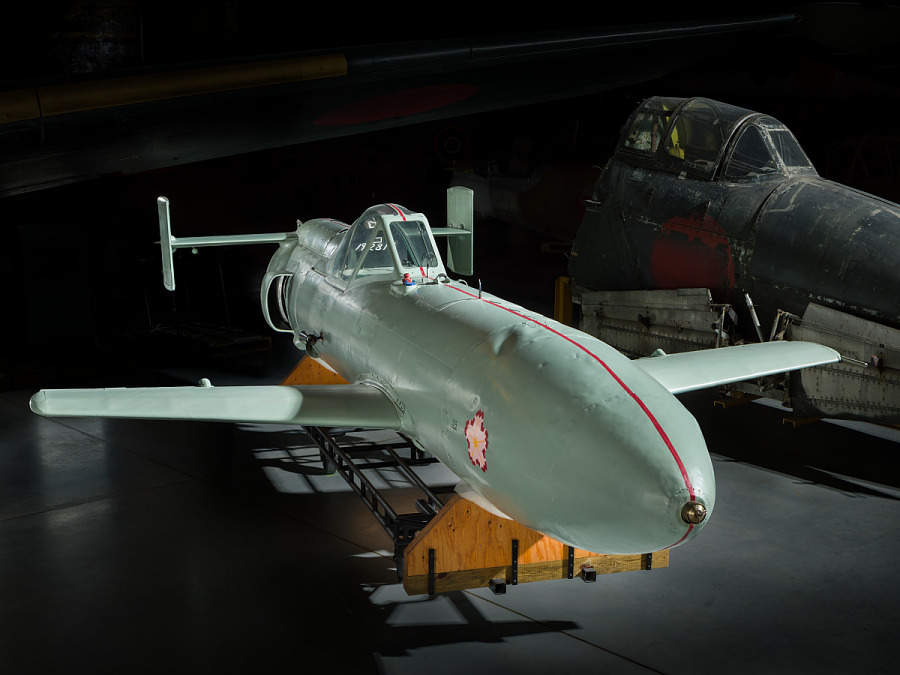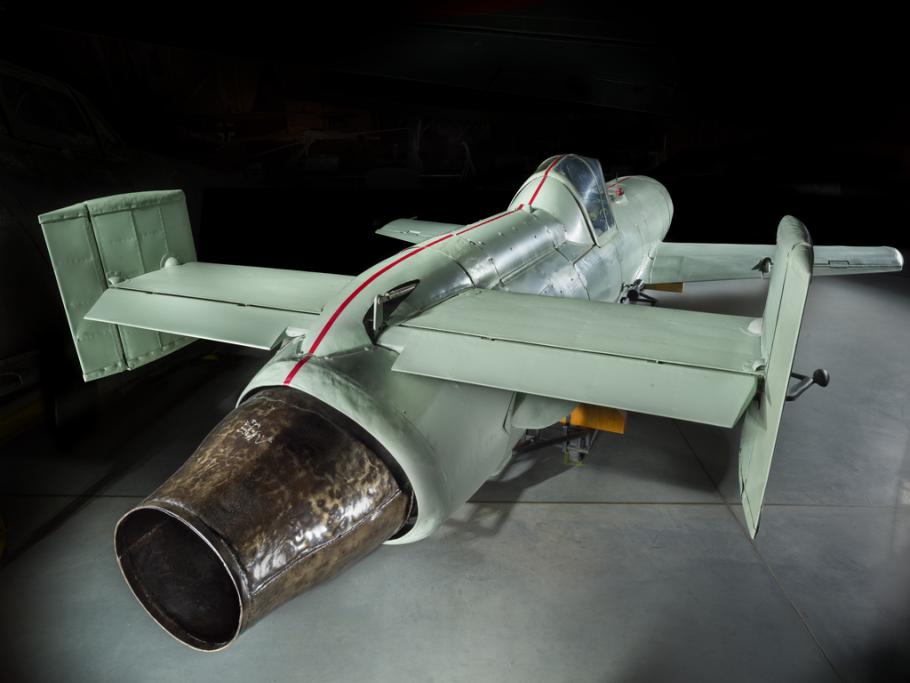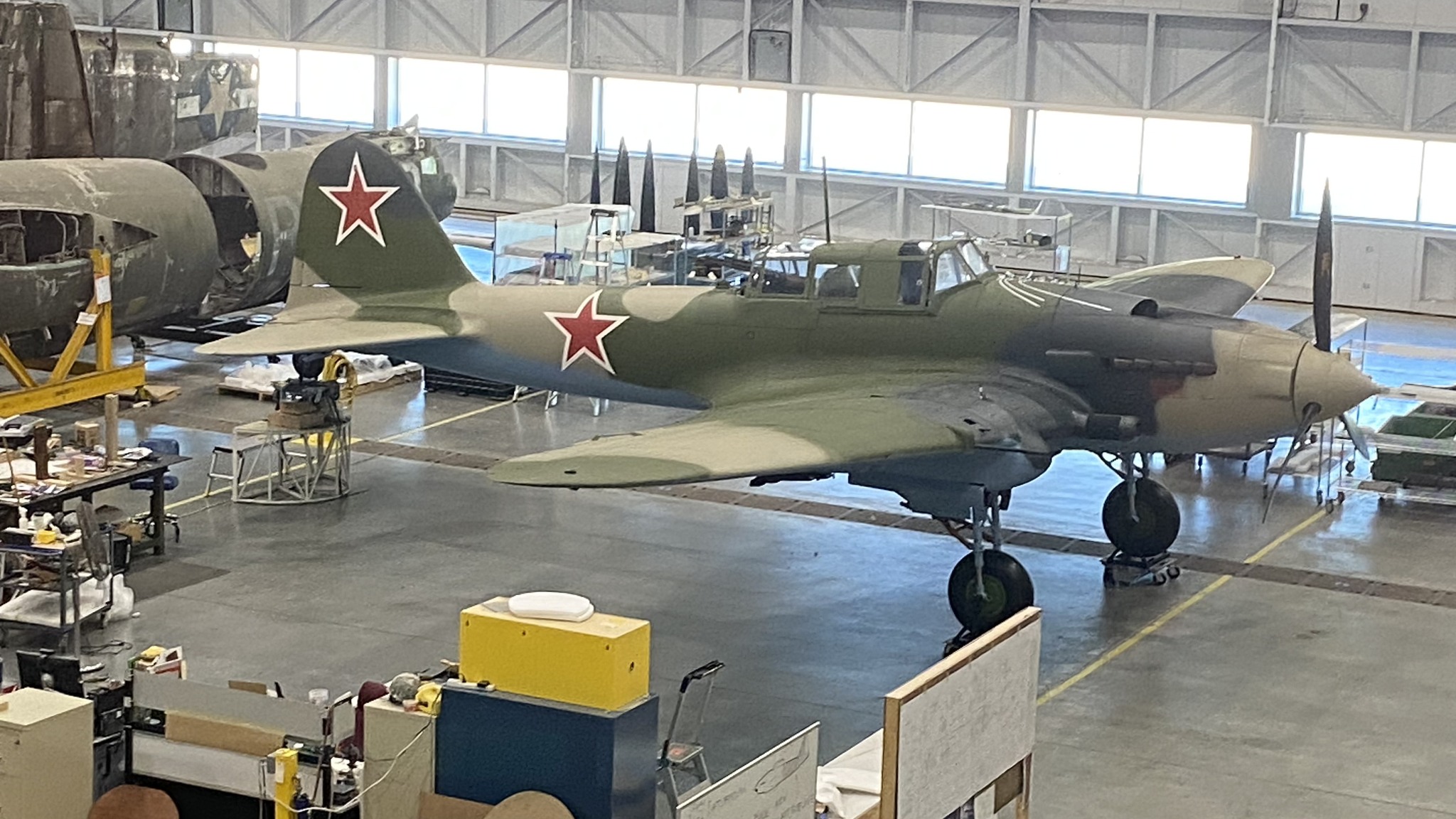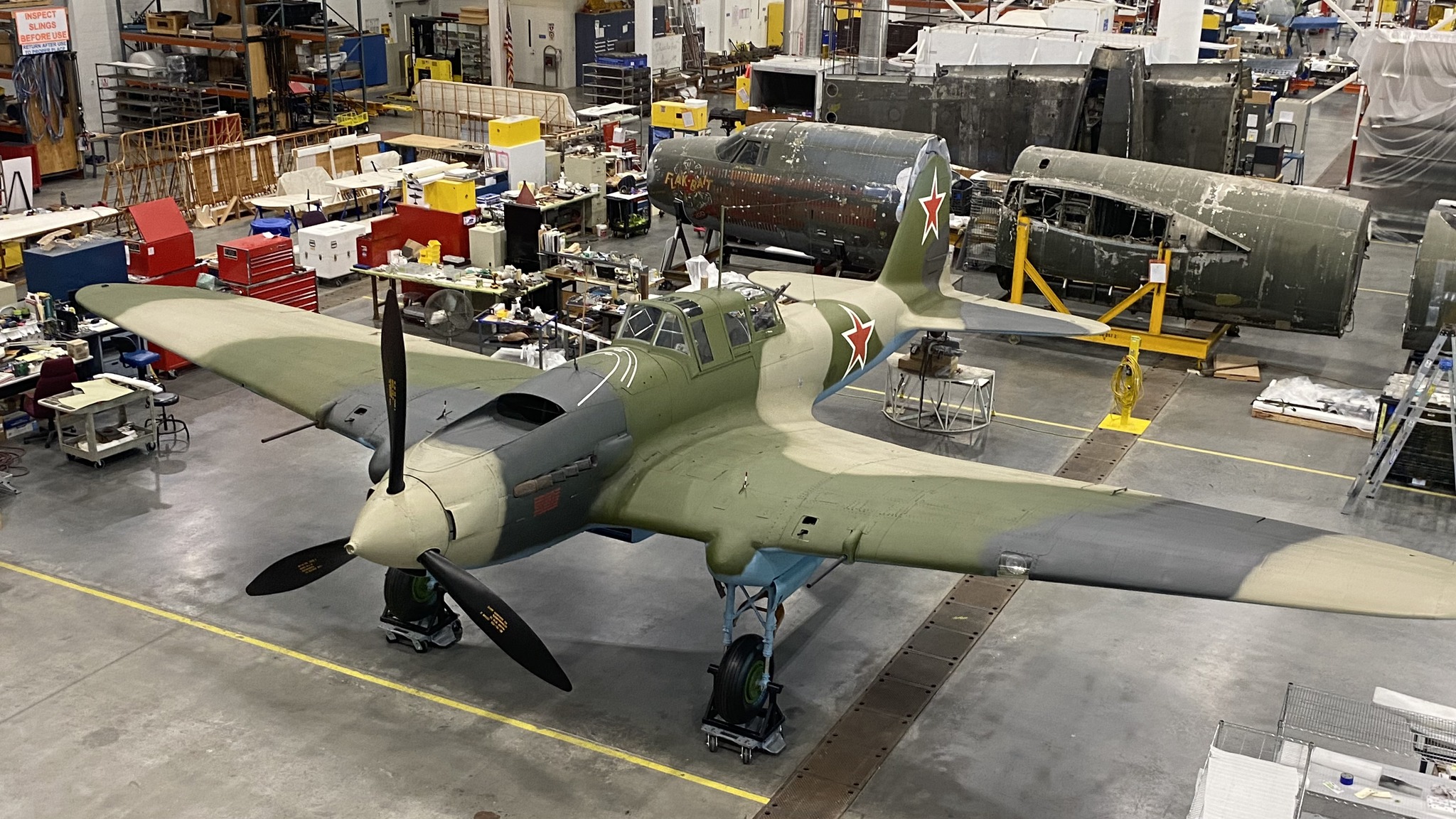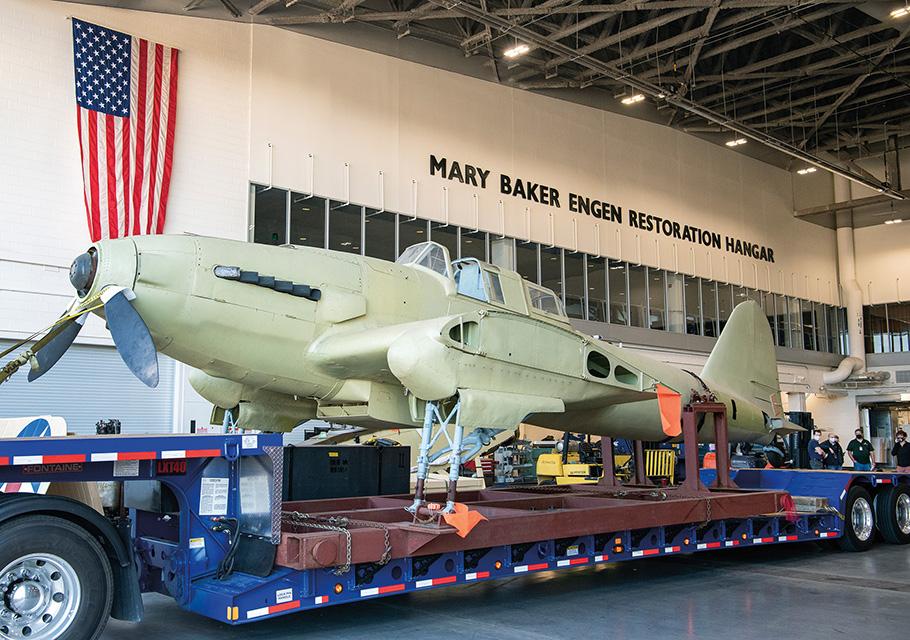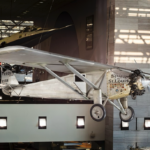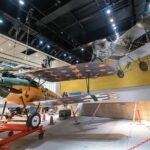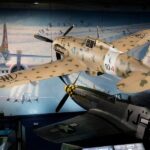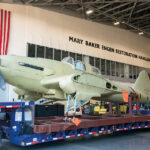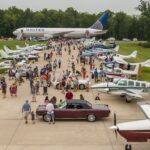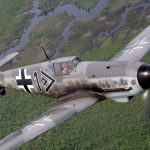The Smithsonian National Air and Space Museum is one of the most visited aviation museums in the world, and for WWII enthusiasts, there is plenty to see at the museum’s Steven F. Udvar-Hazy Center at Dulles International Airport, Chantilly, VA. However, with the currently-ongoing renovation to the museum’s prominent location in downtown Washington, D.C.’s National Mall nearing completion, one of the most anticipated galleries in the new vision of the museum is the Jay I. Kislak World War II in the Air gallery. While we here at Vintage Aviation News have previously covered this upcoming gallery in prior articles HERE and HERE. This article will focus on the aircraft set to go on display in the new gallery, which is set to open by 2026.
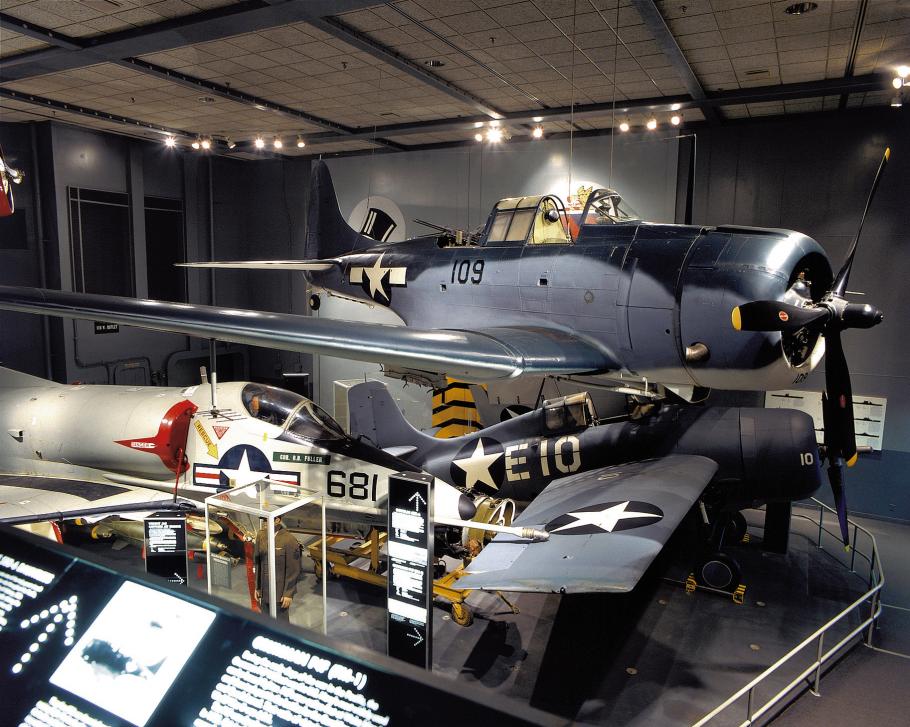
One of the aircraft displayed in the prior gallery for over 40 years was the Smithsonian’s North American P-51D Mustang, which today probably has one of the lowest number of flying hours for a P-51 that survives to this day. Manufactured at North American Aviation’s Inglewood, CA factory, it was delivered to the United States Army Air Force as serial number 44-74939 in July 1945, and never saw combat. It was first assigned to Andrews Field (now part of Joint Base Andrews), MD before being transferred to Freeman Field near Seymour, IN. During its brief time with the USAAF, 44-74939 had the slogan “Guard The Victory, Join the AAF” painted in large black letters on both sides of the fuselage for recruiting purposes. In May 1946, 44-74939 was selected alongside numerous other Allied and Axis aircraft for preservation by Army Air Force Chief of Staff General Henry “Hap” Arnold to be included in the Smithsonian’s then-newly established National Air Museum. By the time 44-74939 was flown from Freeman Field to Orchard Place Airport (now Chicago’s O’Hare International Airport) in Park Ridge, IL, it had been in the USAAF for only eleven months and logged only 211 flight hours. From 1946 to 1952, the aircraft was stored in a former Douglas C-54 plant until the Air Force took the facility back from the Smithsonian, forcing Garber to have the planes shipped to a new location in Suitland, MD, which would eventually become the Silver Hill Facility (now the Paul E. Garber Preservation, Restoration, and Storage Facility).
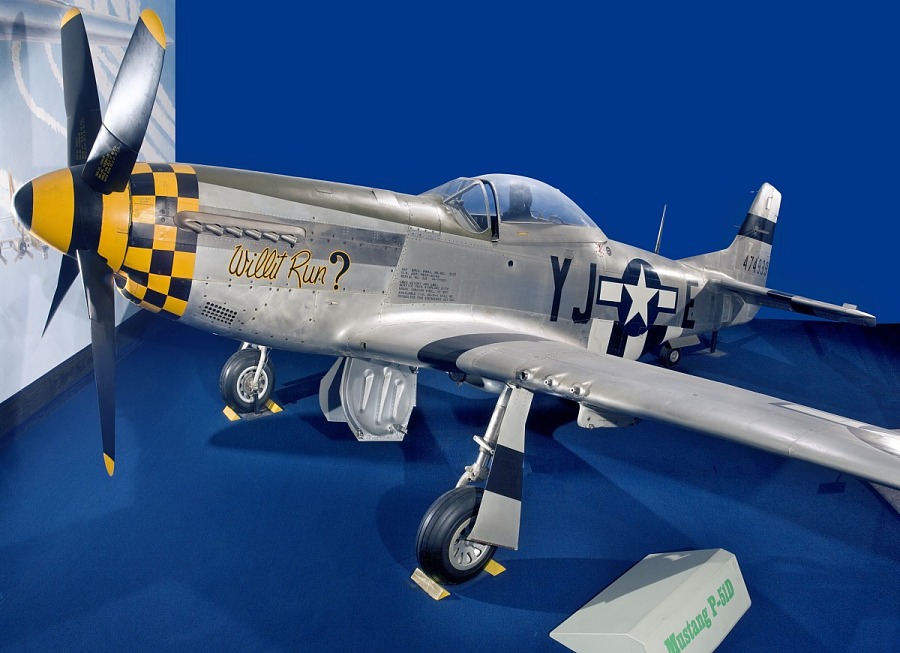
For the next 20 years, the aircraft remained in storage until construction began on the National Mall for the Air and Space Museum in 1972. At Silver Hill, 44-74939 was painted by museum specialists with the markings of Willit Run?, a P-51D flown by Lt. Col. Frederick H. Lefebre of the 351st Fighter Squadron, 353rd Fighter Group, VIII Fighter Command, though 44-74939 retained its original serial number as opposed to the original Willit Run? being s/n 44-14771, which was later renamed Webster St. Special before being tragically lost on March 30, 1945 with pilot 2nd Lt. John Matula. Placed on display in the original WWII in the Air gallery for the opening of the museum on July 1, 1976, Willit Run? was removed from the National Mall in May 2019 and shipped for storage and refurbishment at the Udvar-Hay Center, and later refurbishment in the center’s Mary Baker Engen Restoration Hangar. The new gallery calls for 44-74939, which retains its Willit Run? colors, to be suspended at a 22 degree angle inside the exhibit space. To test this configuration, the aircraft was suspended in the Engen Restoration Hangar before being lowered back on the floor, and is now awaiting shipment back to DC. The museum has published an editorial on the process of hanging the Mustang HERE.
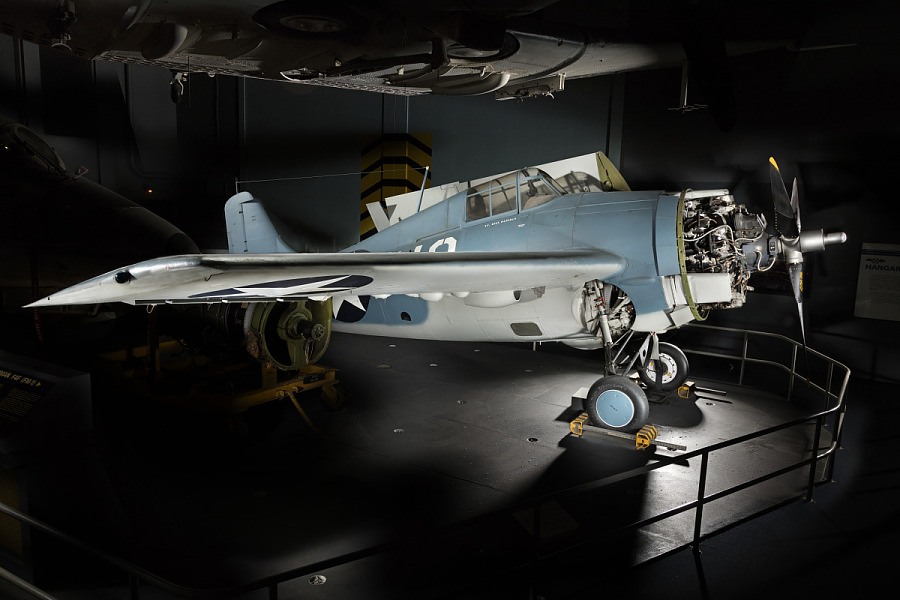
Yet another aircraft from the original WWII in the Air gallery set to be installed in the new gallery is the museum’s Messerschmitt Bf 109G-6. This aircraft has a remarkable history as told in our article HERE, but to summarize, the aircraft was used by Rene Darbois, a Frenchman from Lorraine biding his time in the Luftwaffe until he could find an opportunity to defect to the Allies. On July 25, 1944, Darbois took this Bf 109G-6 (Werknummer 160756 ‘Yellow 4’ of Jagdgeschwader 4) on a formation ferry flight over northern Italy. During the flight, he split off from the formation and flew to Allied-occupied southern Italy, landing at an American airfield at Santa Maria Capua Vetere, just north of Naples, much to the surprise of the American personnel on the quiet airstrip far behind Allied lines. While Darbois would later serve in the Free French Air Force towards the end of the war, his Bf 109 sent the rest of the war being flight tested by the Foreign Equipment branch of Army Air Force Intelligence as FE-496 (later T2-496). In 1946, it was selected for preservation and transferred to Orchard Place alongside P-51D 44-74939 and dozens of other aircraft before being restored from 1972 to 1974 at Silver Hill to be displayed in the original WWII in the Air gallery.
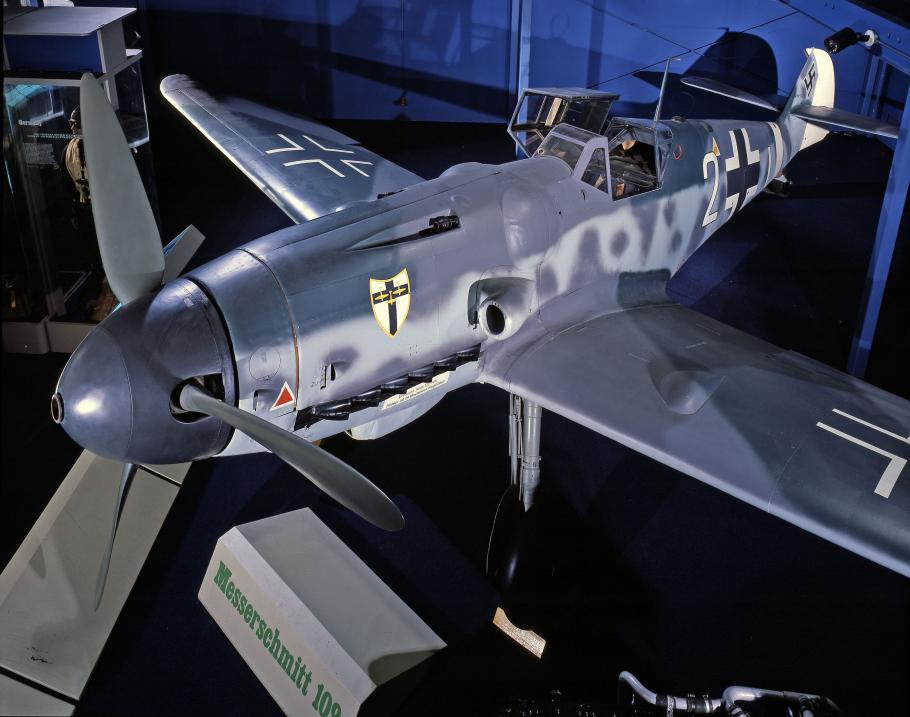
However, at the time the Smithsonian received Werknummer 160756, the aircraft’s original paint had been stripped by the USAAF during its flight evaluation and its primary dataplate had gone missing so the aircraft was originally painted to represent another G-6, Werknummer 160163 of Jagdgeschwader 27, which had several wartime photographs for reference. Later research made by scholars after the aircraft was placed on display prompted future NASM curator Tom Dietz to inspect the aircraft’s cockpit, where he had found a data plate with the serial number 160756 that had been painted over during the initial restoration, and the link to Rene Darbois was only confirmed through further research in 1995. So when the 109 was removed to make way for the renovations to begin, it was a perfect opportunity to restore 160756 in its original markings, based on photographs and film footage taken at Santa Maria Capua Vetere shortly after Darbois’ landing. Currently, the 109 is being repainted in the Engen Restoration Hangar, but will soon be made ready for shipment back to Washington D.C., where the aircraft’s true history will finally be on full display for the first time.

There are also two aircraft from the former Sea-Air Operations gallery going on display in the new WWII in the Air gallery that were not part of the original gallery. Among these is the museum’s General Motors-built FM-1 Wildcat. While many readers familiar with the history of the F4F Wildcat will be familiar with the Grumman-built models such as the F4F-3 and the F4F-4 and the upgraded FM-2s built by the Eastern Aircraft division of General Motors, the FM-1 variant is unfamiliar to most. This version of the famed Wildcat fighter was in fact identical to the Grumman-built F4F-4 but with four .50 caliber machine guns as opposed to the F4F-4’s six, and the installment of wing-mounted hard points for two 250 lb bombs or six unguided rockets, and does not have the tall tail associated with the FM-2 to counteract the torque from an upgraded engine. Today, only three FM-1s remain, with the Smithsonian being home to FM-1 Bureau Number (BuNo) 15392. BuNo 15392 was accepted by the US Navy from Eastern’s Linden, NJ plant on July 21, 1943, and spent its entire service life of thirteen months with the Navy far from sea at Naval Air Station Norman, OK (now University of Oklahoma Westheimer Airport). After its flight training career came to an end, the aircraft stayed in Norman as an instructional airframe before it was placed in storage by the Navy, who transferred the full title to the Smithsonian in 1960, and it was placed in storage at the Silver Hill Facility. During the years it spent in storage prior to being acquired by the Smithsonian, the nose cowl ring for the aircraft went missing, and in 1965, the National Museum of the Marine Corps in Quantico, VA, lent the Smithsonian a ring cowl taken from a memorial on Wake Island dedicated to the pilots of Marine Fighter Squadron 211 (VMF-211) who gave their lives defending the island from a Japanese invasion in December 1941. The cowl even had bullet holes from Japanese machine guns, which were kept in place.
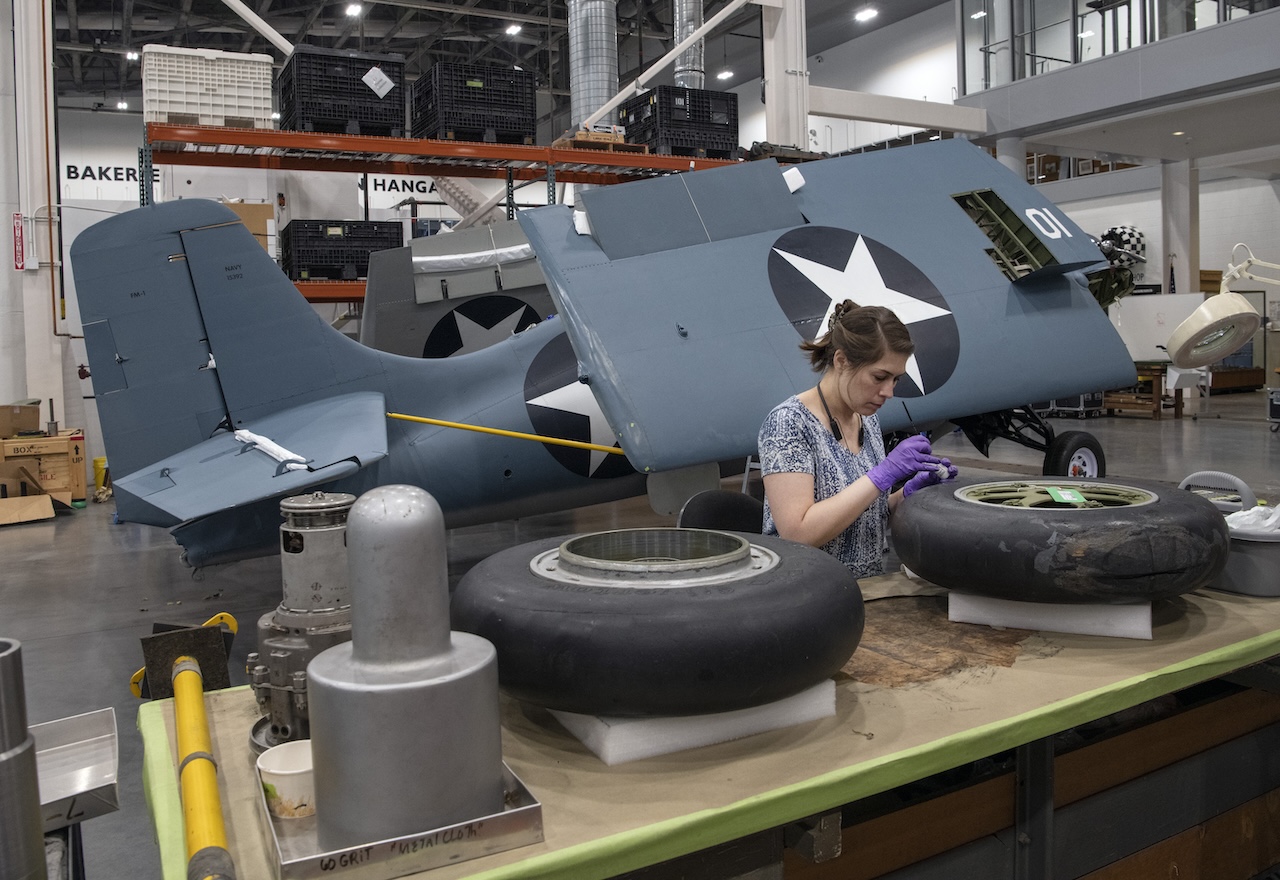
In 1974, Grumman Aerospace Corporation agreed to restore the Wildcat on behalf of NASM, which sent the FM-1 to Grumman’s Bethpage, NY facility to be restored by current and former employees of the company who volunteered to complete the project, with many of these individuals having built Wildcats for Grumman during the war. A year later, in 1975, FM-1 15392 rolled out looking factory fresh, complete with the paint scheme honoring a wartime FM-1 with the fuselage code ‘E10’, flown from the escort carrier USS Breton (CVE-23). When the museum opened, the Wildcat was on display in the Sea-Air Operations gallery, along with other naval aircraft including a Boeing F4B, Douglas SBD-6 Dauntless, and Douglas A-4C Skyhawk. With the closing of this gallery, the decision has been made to move the Wildcat into the upcoming Jay I. Kislak WWII in the Air gallery. A replica nose cowl will be installed to replace the Wake Island cowling, which later returned to the National Museum of the Marine Corps, which also retains the propeller from that same memorial previously on Wake Island.
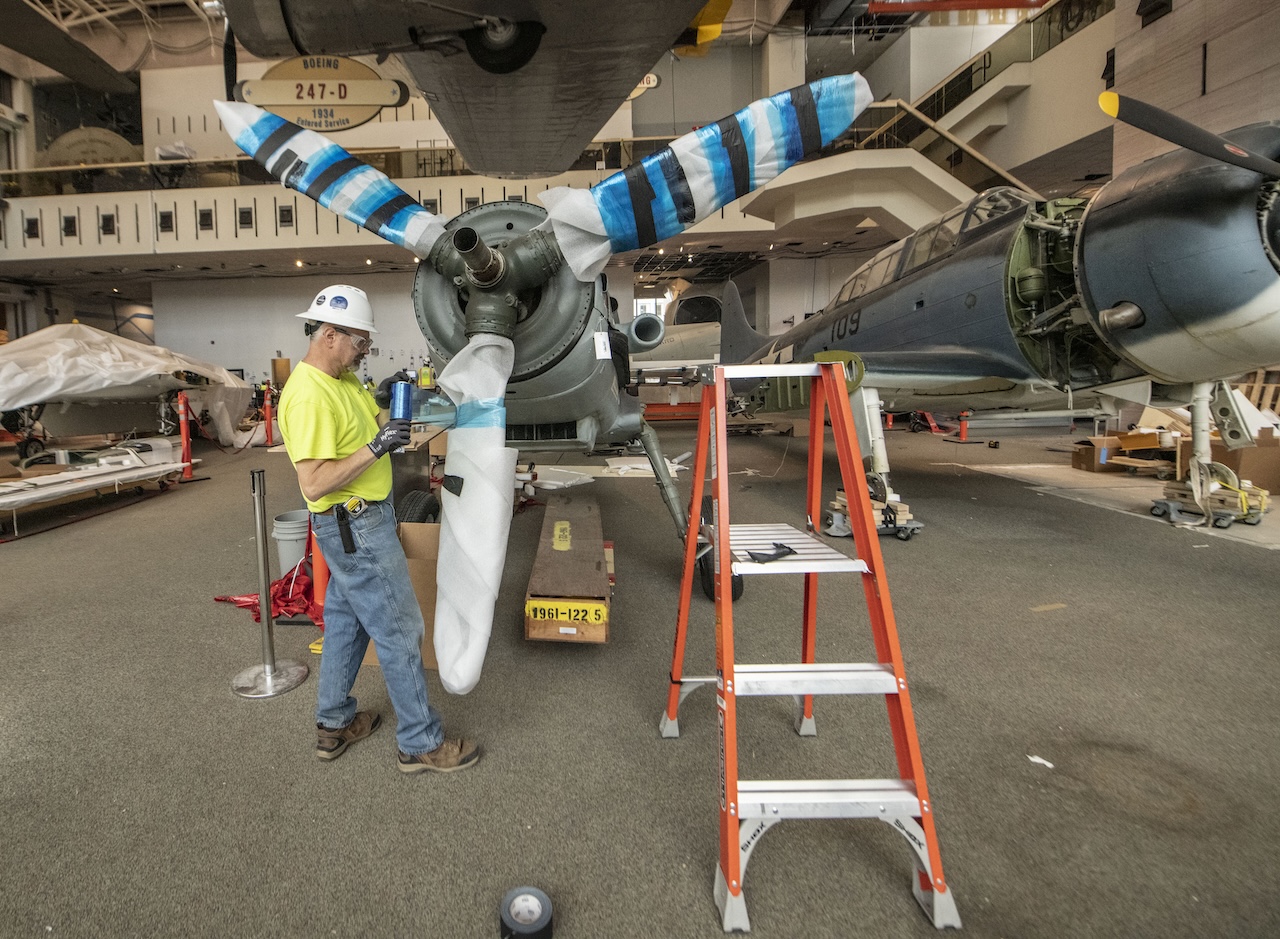
In addition to the FM-1 Wildcat, the Douglas SBD-6 Dauntless dive bomber will make its way from the Sea-Air Operations gallery to the WWII in the Air gallery. NASM’s Dauntless, BuNo 54605, was one of the first examples built of the -6 variant of the venerable Dauntless, being accepted by the US Navy on March 30, 1944, and delivered on April 7. It was flown out of NAS Patuxent River, MD for the entirety of its operational career in the Navy, being used for extensive flight testing until May 1948, when it was sent to NAS Weeksville, NC for storage, and was stricken from the Navy on June 30, 1948, possibly becoming the last SBD in active service with the US Navy. Earmarked for preservation, it was transferred to the Smithsonian in 1961, and restored at Silver Hill in 1975 for installation in the Sea-Air Operations gallery, being suspended above the aforementioned Wildcat. In the vision for the new WWII in the Air gallery, the Dauntless will be suspended again, this time above the entryway for the gallery on the second floor of the National Mall location. It will certainly be quite the guide for anyone wishing to ascertain the location of the WWII gallery.
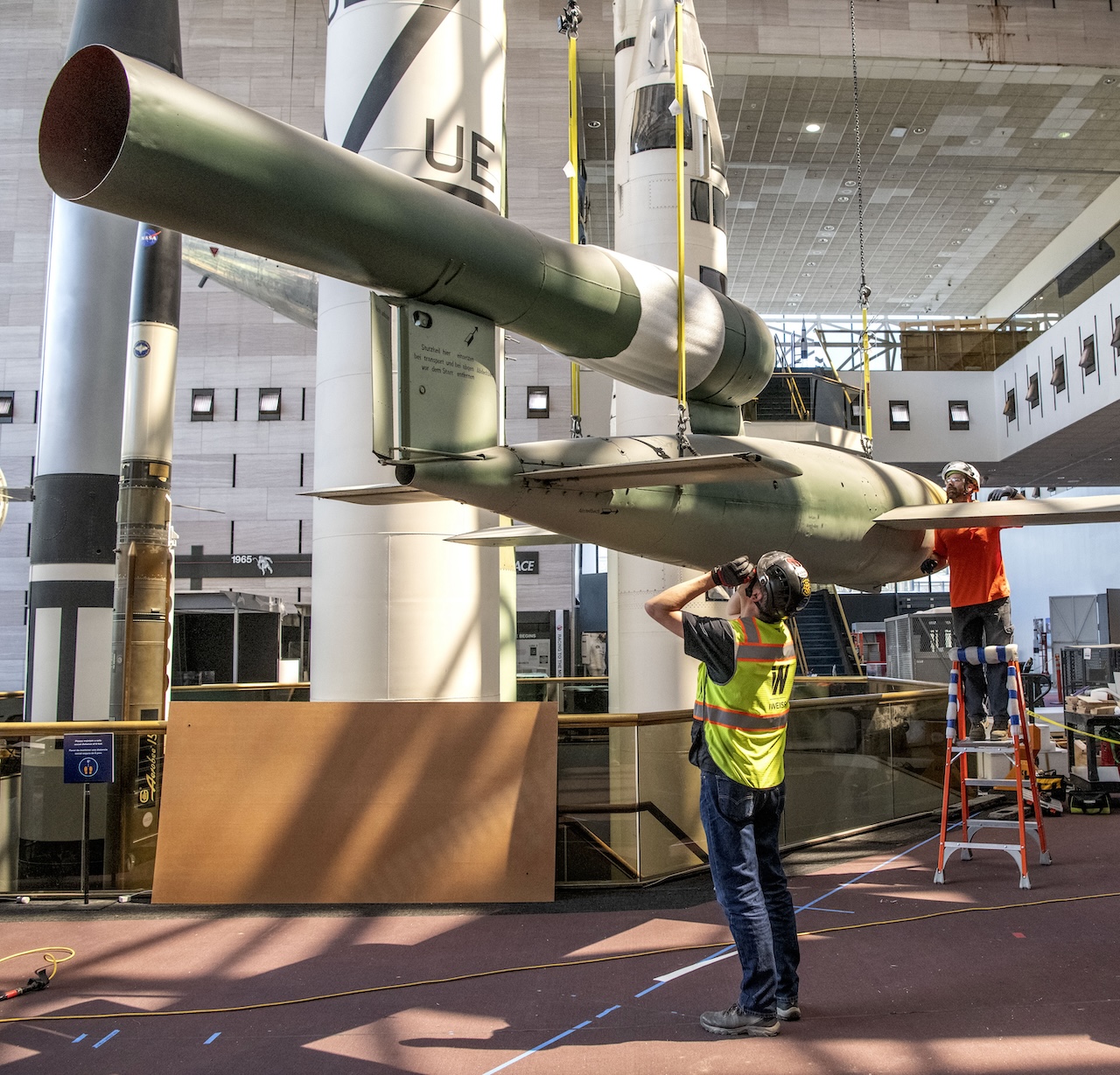
The museum is also set to feature the nose of a Douglas C-47 Skytrain just outside the entrance to the gallery. This comes from C-47A 43-15952, which was noted as being in storage at the Boneyard at Davis-Monthan AFB, AZ from July 1969, when it was transferred from the 4609th Air Base Group at Kincheloe AFB, MI to April 1970 when it was declared ‘excess,’ likely meaning the majority of the aircraft was scrapped. However, the nose found its way to the Smithsonian’s Silver Hill storage facility, and was later loaned to the San Diego Air and Space Museum and painted as a China National Aviation Corporation (CNAC) C-47, like those used to fly supplies from India into China through the Himalayas (or ‘the Hump’ as Allied pilots referred to the world’s tallest mountain peaks). In 2022, the C-47 nose section was removed from display in San Diego and shipped to the Udvar-Hazy Center for repainting. It will now appear in the markings of C-47A 42-100580 Tow Tired, which towed gliders carrying troops and equipment of the 82nd Airborne Division to landing zones near Sainte-Mère-Église, Normandy while operating with the 83rd Troop Carrier Squadron, 437th Troop Carrier Group, Ninth Air Force, based out of RAF Ramsbury, England. Also on display will be a V-1 flying bomb, previously displayed in the Space Age gallery. This example of the infamous “Buzz-Bomb” was acquired by the Smithsonian from the US Army Air Force in 1946 and restored from 1975 to 1976 at the Silver Hill Facility in Suitland, MD for display at the National Mall. Though the museum does not have the relevant documentation to reveal how and when the Army Air Force obtained this specific V-1, it is a well-preserved example of the world’s first operational cruise missile.
Coming from the display floor of the Udvar-Hazy Center to the National Mall’s WWII gallery will be a unique example of the Yokosuka MXY-7 Ohka (Cherry Blossom), a late war kamikaze rocket developed for the Imperial Japanese Navy. While the Ohka was a terrifying weapon to be certain, it’s combat effectiveness was hampered by the interception of the Mitsubishi G4M “Betty” bombers that had to carry the Ohka well inside the range of American Combat Air Patrols (CAPs) in order to deploy the “Baka bombs” as the Americans would dub them. While there are other surviving Ohkas around the world, these are primarily of the Model 11 variant, the most-widely produced example of this suicide rocket, and the example heading from Dulles is the last remaining Model 22, which swapped out the three sold-propellant rocket motors used in the Model 11 for an Ishikawajima Tsu-11 motorjet, which used a Hitachi Hatsukaze (Fresh Wind) piston inline engine to power a combustion chamber to create thrust. Though the Model 22 would carry a smaller warhead than thee Model 11, it would have a longer range than the Model 11, and was designed to be carried by a faster and lighter bomber than the Betty, the Yokosuka P1Y Ginga (Galaxy – Allied reporting name: “Frances”), which would be better able to evade American fighters. Fortunately for American sailors, though, the war ended before the 50 Model 22 Ohkas could be deployed, and one example was shipped to the United States for technical study before being donated to the Smithsonian on April 15, 1948. Displayed for thirty years in the Smithsonian’s Arts and Industries Building, it was later shipped to Silver Hill, where it was fully restored from 1994 to 1997, and was placed on display in the Steven F. Udvar-Hazy Center’s WWII Aviation gallery, alongside other Japanese aircraft below the B-29 Enola Gay. Today, the Model 22 Ohka is being prepared for exhibition in Washington, D.C., with NASM curators now deciding what to install in its place.
The last aircraft planned for inclusion in NASM’s new gallery is the museum’s Ilyushin Il-2 Shturmovik. As detailed in a prior article HERE, the Smithsonian’s example was reconstructed in St. Petersburg, Russia during the early 1990s out of several airframes shot down on the Eastern Front during what Russians call the Great Patriotic War. Transferred to the Smithsonian in 1995, it was kept in storage at the Garber (formerly Silver Hill) Facility until November 2021 after it had been selected for display in the new WWII gallery. Since our previous article on the Shturmovik was published, the aircraft has received its camouflage scheme and Soviet red stars. Soon, the Il-2 will be disassembled for shipment by truck to downtown D.C. to be placed on display to the public for the first time.
There are also some aircraft from the previous WWII Aviation gallery that will not be returning to the new iteration of the gallery set to open in 2026. These include an Italian Macchi C.202 Folgore fighter captured in Sicily in 1943 and used for flight evaluation in the United States (covered in a previous article HERE), Supermarine Spitfire HF Mk.VIIc, a rare high-altitude variant of the Spitfire which was shipped by the British to America for flight testing in 1944, and a Mitsubishi A6M5 Model 52 Zero fighter, which was captured on the island of Saipan in 1944 and brought to America for flight testing with the US Army Air Force. These are currently being kept in storage at the Udvar-Hazy Center, and will likely be placed on display there in the near future following the opening of the new gallery in downtown DC. Also displayed in the gallery for many years was the nose section of the Martin B-26B Marauder Flak-Bait, which survived more combat missions than any other American bomber of WWII. The whole aircraft was in fact selected for preservation shortly after WWII, but only the nose was publicly displayed due to lack of space in the downtown DC museum. With the opening of the Steven F. Udvar-Hazy Center, the entire aircraft has been moved there, and will be reassembled for display in proximity to other WWII aircraft already on display, such as the Boeing B-29 Superfortress Enola Gay. However, the renovations to the museum in DC have seen restoration/conservation technicians focus on the aircraft returning to DC and set aircraft such as Flak-Bait aside until all the galleries in DC have been reopened. We look forward to reporting further developments with the National Air and Space Museum, and to see the new Jay I. Kislak World War II in the Air gallery once it is opened to the public.
Special thanks to Scott Bricker for providing recent images of the Ilyushin Il-2 Shturmovik in the Mary Baker Engen Restoration Hangar.







